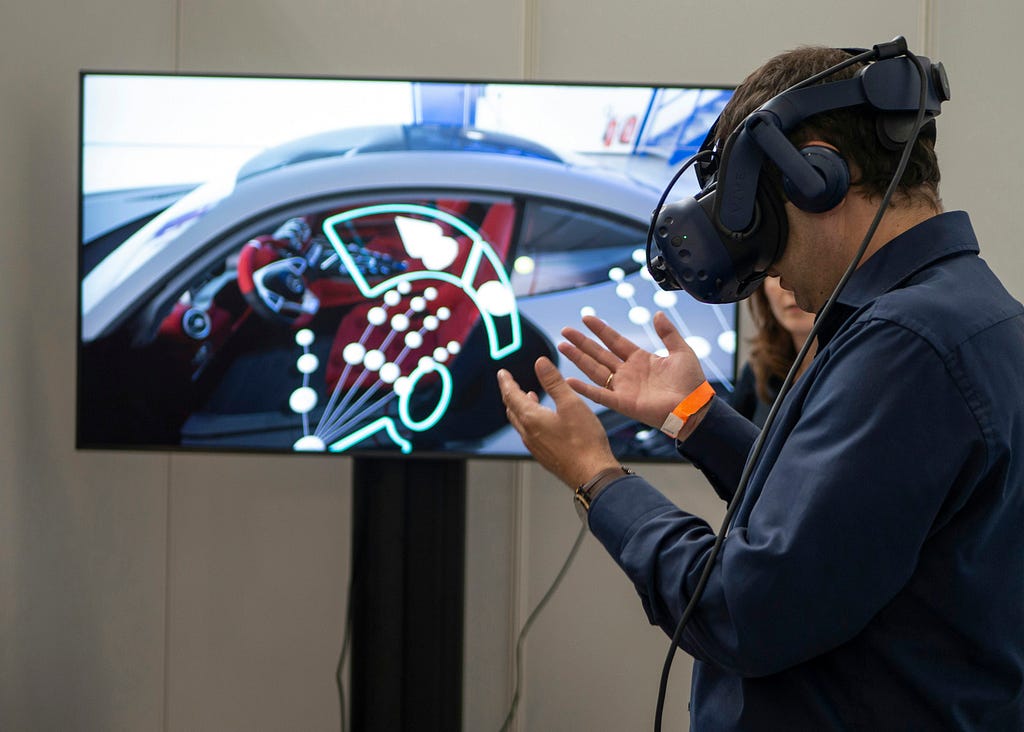
With the development of technology and society’s changing needs, the design profession will undergo certain transformations. I am sure that in the coming years, we will witness the emergence of new specialisations in design that combine creativity with the latest technologies.
Let’s examine 8 professions that may emerge in the design field. It may be time to prepare for some of them now.
Virtual interaction designer

This is a significant growth prospect for UX designers. After all, with the rise of virtual reality (VR), the need to create quality user interfaces and experiences is increasing. Virtual interaction designers will design intuitive and user-friendly interfaces for VR apps, games, and social interaction platforms.
Simulation Designer
A simulation designer will design virtual and real-world simulators used for learning, training, and entertainment.
Eventually, all products, services, advertising campaigns, and services will be tested using users’ simulators. This approach will improve the design and functionality of products, ensuring that they better meet customer needs and expectations before they are launched (in the case of applications or services) or before they reach the market (in the case of products).
Augmented Reality Designer
Augmented reality (AR) is becoming increasingly popular, and AR designers will play a key role in creating interactive content that combines virtual elements with the real world. AR designers will develop apps, games and educational programmes that enrich the user experience. Their services will be in demand in medicine and space programmes.
Digital avatar developer
Digital avatars are becoming integral to virtual communication, and the demand for specialists skilled in creating and programming them will grow. Developers of digital avatars will be engaged in modelling the appearance, animation and implementation of intellectual functions of virtual characters. There are already such specialists nowadays who use AI-based tools for their work. Over time, their demand will increase as augmented and virtual reality demand higher realism and engagement.
Drone designer

Today, drones find applications in various fields, from delivering goods to shooting films. Drone designers will not only design the look of drones and help engineers make design decisions but also work alongside developers responsible for the software to control and navigate the drones.
Designer-integrator
Designers-integrators will combine engineering creativity, technological solutions, and scientific research into a cohesive whole. They will work on creating complex systems incorporating elements of the Internet of Things (IoT), AR, VR and other technologies, ensuring they work cohesively and are user-friendly.
Machine Learning Designer
Machine learning and artificial intelligence (AI) are increasingly influencing our lives. Machine learning designers will create interfaces and systems that make interactions with AI tools as straightforward and user-friendly as possible.
Robot designer

Robots are becoming integral to many industries, from manufacturing to medicine. Robot designers will be involved in creating an attractive visual appearance of robots (shape, colour, materials, and overall aesthetics) and realising the functionality of robotic mechanisms. Theyy will also be involved in developing interfaces for their control.
Robot designers will also analyse robots’ interactions with users and other robots. This analysis will include programming the robot’s behaviour, studying how it reacts to commands and events, and ensuring safety when interacting with humans.
What skills are needed for the professions of the future?

To be successful in the design professions of the future, you need to have these skills:
- Creative thinking and creativity: generating new ideas and finding non-standard solutions.
- Knowledge of modern technologies: understanding the basics of programming and 3D modelling and working with AR and VR tools.
- Interdisciplinary: combining knowledge from different fields and applying it in practice.
- Understanding user needs: user-centred and able to create user-friendly and intuitive interfaces.
- Communication skills: ability to communicate effectively and work in a team.
- Adaptability and willingness to learn: the ability to adapt quickly to change and constantly learn new things.
As technology advances, design professions will continue to evolve, opening up new opportunities for creative people. It’s essential to be prepared for these changes and constantly develop your skills to stay relevant in the labour market.
What courses are already available today?

I enquired about courses you can take to learn new skills. I’m sharing a small list:
- Robotic Design Training & Certification Course
- Product Design for Human-Robot Interaction
- Machine Learning A-Z: AI, Python & R + ChatGPT Prize
- Metaverse Avatars Course: Create Your Avatar Anytime
- Learn A-Frame And Get Ready For WebVR
Write what professions you think will emerge in the future. Who do you see yourself as?
Subscribe and stay in touch. Let me know what you’d like to learn in future posts!
Twitter | Instagram | Dribbble
8 professions of the future in design was originally published in UX Planet on Medium, where people are continuing the conversation by highlighting and responding to this story.